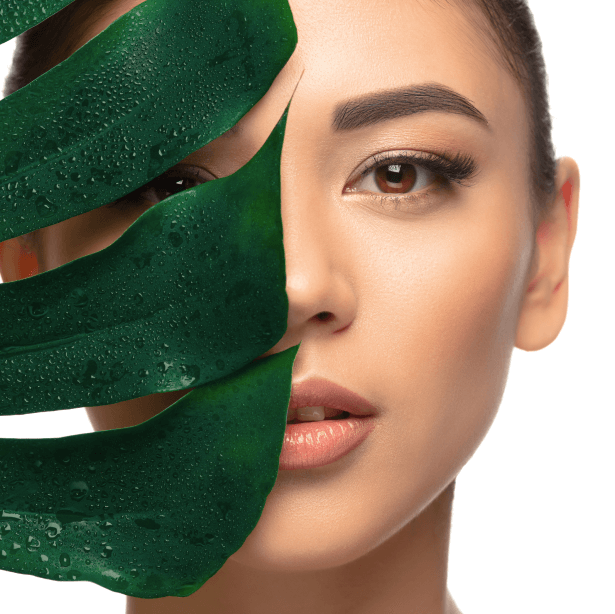In the evolving landscape of aesthetic enhancements, Radiesse has emerged as a noteworthy tool in the palette of dermatologists and cosmetic surgeons. Promising more than a mere brushstroke to mitigate the signs of aging, Radiesse is akin to a sculptor’s chisel, gently molding and adding volume to redefine your age-line softened contours. This in-depth resource is your guide to understanding if Radiesse is the right paint on the canvas of your skin regimen.
Fast Facts
About Radiesse
Initially approved by the FDA for facial lipoatrophy in HIV patients, Radiesse has also earned its stripes in smoothing wrinkles and folds. This injectable dermal filler, composed of calcium hydroxylapatite microspheres in a water-based gel carrier, promotes the body’s natural collagen production to create a scaffolding effect that lifts and fills discrete areas of the face.
Safety Profile
Radiesse is considered a safe and effective procedure with minimal allergic reactions because it’s made of a material that naturally occurs in our bodies. However, as with any medical procedure, there are potential risks that you should discuss with your healthcare professional.
Convenience of Procedure
What makes Radiesse an attractive option is the quick, in-office procedure that can often be scheduled during a lunch break or in between rounds of errands. Convenience doesn’t sacrifice quality, as the sheer efficiency of Radiesse procedures is often lauded by those seeking rejuvenation without significant interference to their schedules.
Cost Considerations
The cost of Radiesse varies on several factors, including the number of syringes required, the expertise of the person administering the injection, and the geographic location of the practice. It’s palpable that Radiesse’s grandeur doesn’t come cheap, thus a cost-benefit analysis will often be part of your pre-treatment ponderings.
Efficacy and Longevity
Efficacy that aligns with promises is pivotal in the realm of aesthetic treatments, and with Radiesse, many have found the results to be not only tangible but lasting for a considerable time, often longer than other fillers. It’s critical to note that individual results may vary based on a person’s response to treatment and lifestyle factors.
What is Radiesse?
Radiesse stands out among facial fillers due to its unique composition. It is made from calcium hydroxylapatite (CaHA) microspheres suspended in an aqueous gel carrier. Once injected, Radiesse not only provides immediate volume correction but also stimulates the body’s natural collage production, resulting in gradual, longer-term enhancement.
How Much Does Radiesse Cost?
The cost of Radiesse injections can vary widely, ranging from several hundred to a few thousand dollars depending on multiple factors. This includes the amount of product you need, the areas being treated, who is performing the procedure, and where the practice is located.
How Does Radiesse Work?
Radiesse works by immediately restoring volume to facial structures and stimulating your body’s natural collagen production. Over time, the gel carrier is absorbed and the body metabolizes the CaHA microspheres, leaving behind your body’s natural collagen for long-lasting effects.
Procedure for Radiesse
The Radiesse procedure is simple and typically completed within 15-30 minutes. Before the injections, a local anesthetic might be applied to minimize discomfort. The filler is then strategically injected into the skin, and your practitioner may massage the area to ensure the filler is seamlessly distributed.
Targeted Areas for Radiesse
Radiesse is often used to treat moderate-to-severe facial folds and wrinkles, particularly around the nose and mouth, such as smile lines. It’s also used to correct age-related volume loss in areas such as the cheeks and temples, improve the appearance of the back of hands, and even enhance the chin.
Are There Any Risks or Side Effects?
Like any cosmetic procedure, Radiesse injections carry some risks and side effects, though they are generally mild and resolve on their own. These may include redness, swelling, pain, itching, bruising, and lumps or bumps at the injection site. More serious side effects, while extremely rare, can occur, so it’s important to be open with your practitioner about your medical history and any concerns you may have.
What to Expect After Radiesse?
After your Radiesse treatment, it’s normal to experience some mild swelling, bruising, and redness in the treated areas. This typically subsides within a week, and you can usually return to your regular activities immediately after your appointment.
Preparing for Radiesse
Before your Radiesse treatment, it’s important to have a full consultation with your practitioner to discuss your aesthetic goals and any medical conditions or allergies you have. They can give you specific instructions on how to prepare, which may include avoiding certain medications and supplements that can increase bleeding.
Radiesse vs. Juvederm
While both Radiesse and Juvederm are dermal fillers, they have different compositions and purposes. Radiesse is made from calcium hydroxylapatite microspheres, while Juvederm is hyaluronic acid-based. Each is better suited for certain types of wrinkles and volumes loss. Your practitioner can help you decide which is best for you during your consultation.
FAQs
What Does Radiesse Treat?
Radiesse is primarily used to correct moderate-to-severe facial folds and wrinkles, such as nasolabial folds (smile lines). It’s also used to restore volume in the cheeks and the back of hands, and even augment the chin.
What Happens During Radiesse Treatment?
During the Radiesse treatment, the practitioner will first mark the areas to be injected. They will then use a fine needle to inject Radiesse in these areas, often following the markings placed. After completing the injections, the areas will be gently massaged to ensure smooth distribution of the filler.
Will There Be Downtime After Treatment?
There is typically little to no downtime after Radiesse treatment. While you may experience slight swelling or bruising at the injection sites, you can usually resume your normal activities immediately.
Is Radiesse Filler Permanent?
Radiesse is not permanent, but its effects are long-lasting. It can last up to a year or more before you may need touch-up treatments to maintain your desired results. The natural collagen left behind can continue to provide some benefit after the filler has been fully metabolized.

